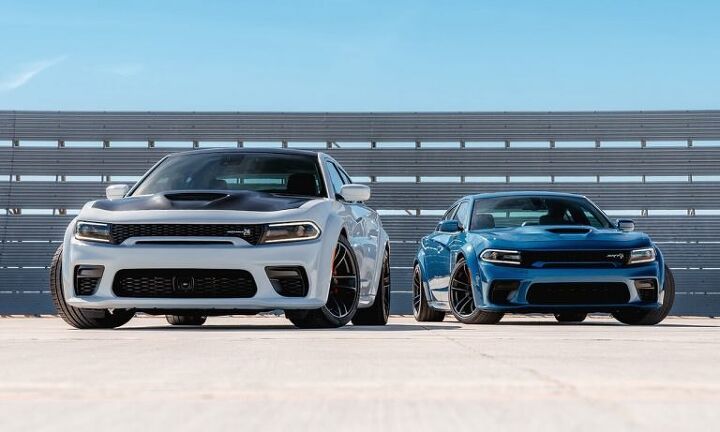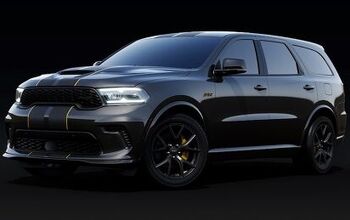The Fastest Version is Not the Best Version
We’re living in a golden age of performance where somehow, despite all the focus on electrification and sport-utility development, you can still buy a nearly 800 horsepower coupe off the showroom floor for less than six figures. All of the so-called “Detroit 3” manufacturers are offering supercharged V8’s that start with the Camaro ZL1 and Corvette Z06’s 650 hp and top out at the Challenger Redeye’s 797 hp. The new Shelby GT500 falls in between, with 760 hp.
Are they the fastest iterations of each of their respective platforms? Yes. Does that make them the best? No. In fact, they become inferior in the process.
Now, before we go any further, let me clarify that I’m a road racer and vehicle dynamics engineer, not a drag racer or powertrain engineer. As such, I tend to value a car’s handling more than its straight-line performance. If acceleration or top speed are your main priorities, then my argument will mean little to you.
Dodge, in particular, has catered to the drag racers with the Challenger Demon and 1320 Drag Pack models. Those packages were offered with suspension tuning and tires that were specific to the job of getting off the line as quickly as possible. If drag racing is your thing, then more power to you. Those are excellent tools for the task.
In the case of the Camaro ZL1, Corvette Z06, Shelby GT500, and Challenger Hellcat Widebody, they all come with tires and suspension tuning that are clearly intended to make the cars perform well around corners. Therefore, we can conclude that these cars are designed for drivers that put an emphasis on handling.
Here’s where all those models go wrong. The pitfalls of adding the supercharger are not worth the benefits. Yes, they’re faster. But there are enough compromises made in the process that they outweigh the straight-line benefit.
Now, we’re not talking about competition cars. Even in competition, most sanctioning bodies classify autos by power-to-weight ratio or by limiting engine output. So, no significant benefit is gained by going faster in a straight line. You’d just get bumped to an appropriate class. We’re talking about street and track-day performance vehicles. So-called “drivers’ cars.”
Adding a supercharger onto their naturally-aspirated counterparts takes away from the overall satisfaction of driving these automobiles. The naturally-aspirated cars I’m referring to are the Camaro SS 1LE, Corvette Grand Sport, Challenger and Charger Scat Pack Widebodies, and Shelby GT350. Each of these cars are not only lighter, but have lower and more rear-ward centers of gravity. The superchargers, themselves, are mounted on top of the engine, creating a greater roll moment — and thus body roll — which is primarily carried over the front axle. Adding in the mass associated with the additional air and fluid-cooling line plumbing, as well as additional radiators, the Camaro, Challenger, and Charger gain nearly 200 pounds in their supercharged versions. That’s about 5 percent of their total mass hanging out high over the front axle.
The result of this is multi-faceted. First, the increase in roll needs to be dealt with through increases in roll stiffness, which come with compromises to ride quality. Secondly, the response time of the front-end is lengthened as there is more mass to move. Even if stiffer bars, springs, dampers, and/or bushings are used to recover the initial steering and handling response, it still takes longer for the complete load transfer to take place among the tires. Thirdly, once the weight transfer is complete, the front tires need to carry most of that additional 200 lbs of load. Again, this is being exerted from high in the engine bay, increasing the roll moment. The same factors apply to braking, as well.
So, what does this actually mean to the driver? Much of my direct hands-on experience is with the Chargers and Challengers, as I was a vehicle dynamics engineer for that platform for a time. Using them as examples, the Hellcat models have slower steering and turn-in response, take longer to take a set in the turn, and have considerably more corner-entry understeer than their 6.4L Scat Pack counterparts.
Of course, on the way out of a turn, it is more difficult to manage wheelspin when trying to apply the additional power of the Hellcat. Thus, the driving style required to best negotiate a turn is to use heavy trail-braking, over-slowing and rotating the car at apex, and straightening out the exits to apply as much forward propulsion as possible. It’s not exactly the stuff that sports cars are made of.
The L-platform cars might be the most extreme example among the pony cars, but the same principles apply to the others. As much as the development engineers try to quell the impact of the added weight, the differences are there. The Corvette tries to actively compensate for the added mass of the Z06’s supercharger by swapping to a carbon-fiber roof and hood, which the Grand Sport does not get. As a result of the entirety of their weight-offsetting efforts, the Z06 limits the mass increase to just 96 lbs, or about 3 percent.
There are additional compromises that come with the inclusion of a supercharger, most namely among them being heat. The supercharger that enables the elevated power levels creates tremendous heat through the compression of air, requiring that it be expelled by use of an intercooler. The airflow through an engine bay is already being commanded by a multitude of radiators and heat exchangers. The addition of an intercooler and potentially enlarged oil, water, and transmission fluid heat exchangers means that inlets and outlets need to be opened up, which all add drag. Managing temperatures is incredibly difficult, as evidenced by the issues seen with the Z06.
The 650 to 797 hp available from the supercharged pony cars provide propulsion like a jet on take-off. While we can first question where one could sensibly use this power on public road, I’d venture that the engines just aren’t as much fun in application. For one, applying full power through the entire rev range is rarely possible on the street and you certainly can’t do so for very long when it is.
Even when you can, the constant thrust of the supercharger’s flat torque curve can make it feel less exciting. Kind of like in a plane, when you’re a few seconds past the initial surge when the brakes are released. It’s still accelerating quickly, but the sensation of it tapers off. An engine that builds more power in the upper rpms — and falls slightly as the revs drop on upshift — might not be as fast, but feels more exciting and rewarding to run through the gears.
The additional power of the top Camaros, Corvettes, Mustangs, Chargers, and Challengers all come with significant costs. The added mass of the superchargers leads to suspension upgrades that may add even more mass. Larger tires, wheels, or brakes would contribute to mass increases, as well. Additional heat expulsion in the engine bay requires plumbing and heat exchangers which — you guessed it — add mass.
All these factors bring with them the most obvious form of cost, and that’s calculated in dollars. I’m not going to pretend that fuel economy matters here. But, with the added power comes engineering, development, and component costs that are sunk into simply trying to offset the impact of the larger powerplants.
The supercharged cars are faster, but only in acceleration. Roughly speaking, the first half of the power gains may simply offset the losses in handling and braking. The second half of the power difference then goes to actually decreasing lap time. I’d call that a 50 percent return on investment.
A “driver’s car” is typically one that has a proportionally balanced power-to-grip ratio, with great handling performance. The best drivers’ cars of the group are then not the fastest versions, but the top naturally-aspirated versions. So, if you’re shopping, save yourself a few bucks and go with the Camaro SS 1LE, Corvette Grand Sport, Shelby GT350, or Charger or Challenger Scat Pack Widebody. You can PayPal me a 5-percent tip on your savings in exchange for your added enjoyment.
When you see a driver of one of the cars above, tip your hat to them, because they probably get it. I think they deserve the recognition more than the driver that just bought the fastest or most expensive version.
[Images: FCA, GM, Ford]
Following 10 years in Toyota's Production Engineering division, Anthony spent 3 years as a Vehicle Dynamics Engineer for FCA. From modest beginnings in autocross, he won a NASA SpecE30 National Championship and was the 2017 Pirelli World Challenge TC Rookie of the Year. Aside from being a professional racecar driver, he is a private driving coach and future karaoke champion.
More by Anthony Magagnoli
Latest Car Reviews
Read moreLatest Product Reviews
Read moreRecent Comments
- Spectator Wild to me the US sent like $100B overseas for other peoples wars while we clammer over .1% of that money being used to promote EVs in our country.
- Spectator got a pic of that 27 inch screen? That sounds massive!
- MaintenanceCosts "And with ANY car, always budget for maintenance."The question is whether you have to budget a thousand bucks (or euro) a year, or a quarter of your income.
- FreedMike The NASCAR race was a dandy. That finish…
- EBFlex It’s ironic that the typical low IQ big government simps are all over this yet we’re completely silent when oil companies took massive losses during Covid. Funny how that’s fine but profits aren’t. These people have no idea how business works.







































Comments
Join the conversation
Having worked my way through the Uber-cars of the Classic Car Club of NY, I totally agree with this article. You've so much engine (CTS-V, or Porsche GT3) that you can only drop the hammer getting onto one or two major freeways in my area. You pass illegal in a blink...get to fast in a second...and the third blink is death and mayhem, or at least arrest. The other 99.9 percent you are just noticing the hard ride... The car turned up to 11 is the same car you'll see in the ads four years later, in great shape, with "only 7500 miles". My neighbor gets press cars...we discussed the Nissan GT-R, which he borrowed and I got from the car club....we agreed that it's useless as a DD as it rides too hard and what it does well is useless in commuting. Are the uber cars fun ? Oh yes...but like a model with a nose candy habit, one great night doesn't translate into domestic bliss.
We have arrived at a point in history where having the most horsepower is no different from a contest to see whose piss can land the farthest away from their feet